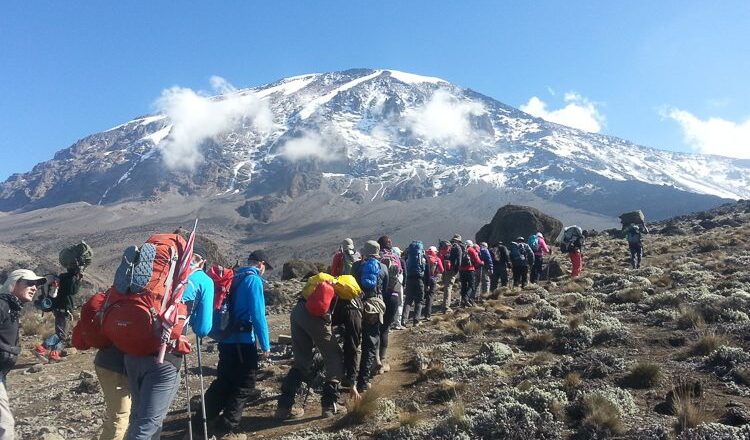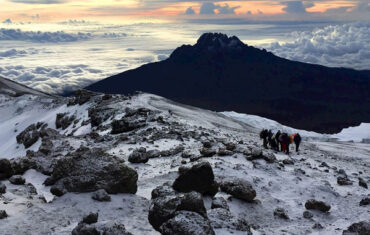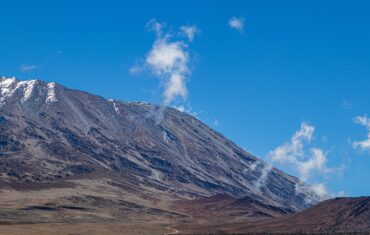The Challenges and Triumphs of Climbing Mount Kilimanjaro
Mount Kilimanjaro, with its towering peak and breathtaking vistas, has captivated the hearts of adventurers and nature enthusiasts for generations. The allure of conquering Africa’s highest peak and standing at the “Roof of Africa” is a dream that many aspire to fulfill. However, this journey is not without its trials, and the difficulty of climbing Kilimanjaro adds an extra layer of complexity to the adventure. In this article, we will delve into the challenges and triumphs that climbers encounter while scaling the majestic Mount Kilimanjaro.
Understanding Mount Kilimanjaro
The Geological Wonder
Mount Kilimanjaro is a stratovolcano located in Tanzania, boasting three volcanic cones: Kibo, Mawenzi, and Shira. Its distinct snow-capped summit is a result of its unique geographical location near the equator. Kilimanjaro’s diverse ecosystems, from lush rainforests to arctic-like glaciers, make it a truly remarkable destination for trekkers.
Routes and Altitude Zones
Climbers have a variety of routes to choose from, each with its own characteristics and challenges. The Marangu, Machame, Lemosho, Rongai, and Northern Circuit routes offer different experiences, ranging from more direct ascents to longer, more gradual treks. The altitude zones—cultivated, montane forest, heath and moorland, alpine desert, and arctic—bring distinct weather and physical conditions that climbers must navigate.
Difficulty Climbing Kilimanjaro: Preparing for the Ascent
Physical and Mental Readiness
Climbing Kilimanjaro requires more than just a desire for adventure; it demands physical fitness and mental preparation. Regular cardiovascular workouts, strength training, and endurance exercises are crucial. Mental resilience, forged through visualization and mental conditioning, plays a pivotal role in facing the journey’s challenges.
Packing Essentials
Packing smartly can make or break the climb. The right clothing for varying climates, durable hiking boots, and high-quality gear are essential. Additionally, trekking poles, a comfortable backpack, and a well-equipped first aid kit are crucial for a safe and successful climb.
Overcoming Altitude Sickness: Difficulty Climbing Kilimanjaro
The Risks of Altitude Sickness
Altitude sickness, caused by the body’s struggle to adjust to reduced oxygen levels at high altitudes, can be a formidable obstacle. Symptoms include headache, nausea, and fatigue. It’s vital to ascend gradually, allowing the body to acclimatize and reduce the risk of severe sickness.
Strategies for Success
Climbers can combat altitude sickness by drinking ample water, maintaining a steady pace, and practicing rest and acclimatization days. If symptoms worsen, descending to lower altitudes becomes a necessity. Recognizing severe cases and prioritizing health over the summit bid is a difficult but crucial decision.
Navigating Weather and Climate
Unpredictable Conditions
Mount Kilimanjaro’s weather is unpredictable, thanks to its distinct microclimates. While clear skies and moderate temperatures are ideal, climbers should be prepared for sudden weather changes. The mountain’s high altitude means that weather can shift rapidly, from sunny to snowstorm in a matter of hours.
Timing the Climb
Climbers should choose their climbing window wisely. The best time to conquer Kilimanjaro is during the dry seasons, from January to February and June to October. These periods offer more stable weather conditions and better chances of summiting.
The Physical and Mental Challenges
Pushing Physical Boundaries
Climbing Kilimanjaro demands physical endurance. Trekking for several hours a day, sometimes in challenging terrains, tests climbers’ stamina. Dealing with fatigue, muscle soreness, and the physical demands of high altitudes requires mental tenacity.
Cultivating a Positive Mindset
Maintaining a positive mindset is pivotal, especially when facing tough moments. The camaraderie of fellow climbers, the encouragement of guides, and the awe-inspiring beauty of the surroundings can help climbers overcome mental hurdles.
Guides, Porters, and Support: Difficulty Climbing Kilimanjaro
Invaluable Expertise
Local guides are an invaluable source of knowledge, offering insights into the mountain’s geography, climate, and culture. Their experience enhances climbers’ safety and chances of success.
Ethical Treatment of Porters
Porters play a crucial role in supporting climbers by carrying equipment and supplies. Ensuring their fair treatment, proper wages, and suitable working conditions is essential for creating an ethical and responsible climbing environment.
Unity Among Climbers
Creating a supportive atmosphere among climbers fosters a sense of community. Encouragement, sharing experiences, and helping one another through challenges can make the climb more enjoyable and rewarding.
Camp Life and Accommodations
Life on the Mountain
Climbers spend nights in various camps along their chosen route. Camp life is basic but functional, offering shelters and sometimes dining areas. Adequate sleep and rest are crucial for maintaining energy levels throughout the climb.
Tips for a Restful Night
Sleeping at high altitudes can be challenging. Carrying a warm sleeping bag, using insulating sleeping pads, and following a bedtime routine can contribute to a more comfortable night’s rest.
Building Connections
Climbers often forge meaningful connections with fellow trekkers during the journey. Sharing stories, laughter, and mutual support create a sense of camaraderie that adds to the overall experience.
Nutrition and Hydration: Keyword Difficulty Climbing Kilimanjaro
Fueling the Body
Proper nutrition is essential for maintaining energy levels during the climb. High-calorie, nutrient-dense foods help sustain physical exertion and combat altitude-induced loss of appetite.
Hydration in High Altitudes
Staying hydrated is a challenge at high altitudes, where the body loses moisture more rapidly. Sipping water frequently and consuming hydrating snacks can prevent dehydration.
Balance and Energy
Balancing food intake with physical activity is key. Overeating can lead to discomfort, while under-eating can deplete energy levels. Finding the right balance ensures a steady source of energy throughout the climb.
Captivating Flora and Fauna
Ecological Diversity
Mount Kilimanjaro’s diverse ecosystems harbor unique flora and fauna. Climbers witness transitions from lush rainforests to alpine deserts, each housing distinct plant life and wildlife.
Encounters with Wildlife
Though not a traditional wildlife destination, Kilimanjaro
offers chances to spot wildlife such as monkeys, birds, and even larger animals like elephants. Respecting their habitats and maintaining a safe distance is crucial.
Responsible Climbing Practices
Practicing responsible and eco-friendly climbing helps preserve the natural beauty of Kilimanjaro for generations to come. Minimizing waste, following designated paths, and respecting local customs are essential.
Reaching the Summit
Uhuru Peak: A Triumph of Will
Reaching Uhuru Peak, the highest point of Kilimanjaro, is a momentous achievement. The emotional and psychological significance of conquering the summit cannot be overstated.
Challenges of Summit Night
Summit night is a formidable test of physical and mental strength. Climbers embark on a pre-dawn ascent in freezing temperatures, navigating steep paths by headlamp. The biting cold and altitude make this one of the toughest segments of the climb.
Celebrating the Summit
Standing at Uhuru Peak is a moment of exultation. The panoramic views, the sense of accomplishment, and the realization of a long-held dream make the challenges of the climb worth every step.













